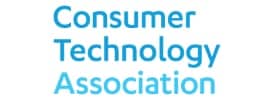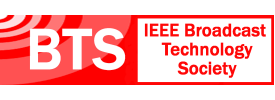- About
- Members
- Sponsors
- Subcommittees
- About Our Subcommittees
- Technology Group 3
- Implementation Team 1 – Advanced Emergency Information
- Implementation Team 2 – India
- Implementation Team 3 – ATSC 3.0 Conformance
- Implementation Team 4 – Brazil
- Implementation Team 5 – Tower Network
- Implementation Team 7 – Caribbean
- Implementation Team 8 – Automotive
- Planning Team 4 – Future Broadcast Ecosystem Technologies
- Planning Team 5 – Automotive Applications
- Planning Team 6 – Global Recognition of ATSC 3.0
- Planning Team 9 – Sustainability
- Technical Documents
- News
- Events
- Spotlight ATSC 3.0
- Contact Us
- Member Login
- Member Meetings
- Advanced Search
Search Site
Member Links
- About
- Members
- Sponsors
- Subcommittees
- About Our Subcommittees
- Technology Group 3
- Implementation Team 1 – Advanced Emergency Information
- Implementation Team 2 – India
- Implementation Team 3 – ATSC 3.0 Conformance
- Implementation Team 4 – Brazil
- Implementation Team 5 – Tower Network
- Implementation Team 7 – Caribbean
- Implementation Team 8 – Automotive
- Planning Team 4 – Future Broadcast Ecosystem Technologies
- Planning Team 5 – Automotive Applications
- Planning Team 6 – Global Recognition of ATSC 3.0
- Planning Team 9 – Sustainability
- Technical Documents
- News
- Events
- Spotlight ATSC 3.0
- Contact Us
- Member Login
- Member Meetings
- Advanced Search
President’s Memo
Posted on October 1, 2014 in ATSC News
Lots of things are going on in the world of “new media” these days. The ways we consume content continue to evolve. Spectrum is becoming more scarce. The pace of change is accelerating. Not to sound like an alarmist, but I fear that television broadcasting may be left behind. The threats are real and becoming increasingly stark.
To stay relevant and vibrant, broadcasting will need to deliver content on any device, anywhere. Broadcasting will need to deliver 4K Ultra HD content. Broadcasting will need to deliver interactivity and personalization.
ATSC 3.0 promises to deliver all this and more. So for all of us involved in the ATSC’s efforts to develop next-generation television standards, we should view the changing landscape not as a threat but as a huge opportunity.
It’s important to optimize the new standard. And it’s equally important to get it done sooner than later. We can’t afford to delay our work to explore every new technological possibility.
The foundation of the new standard should meet the needs of viewers, broadcasters and manufacturers today and in the relative near term, while building in flexibility for tomorrow. The ATSC Technology Group TG-3 and its specialist groups are working to assure that the new standard will be extensible and flexible so it can evolve to meet needs that we haven’t even thought of yet.
While enthusiastic about our significant progress on ATSC 3.0, particularly the Physical Layer standardization, broadcasters and manufacturers alike are emphasizing the need for speed. Moving ahead expeditiously will require teamwork and collaboration. It will require making tough choices. It will require discipline and nimbleness to stick to the schedule.
Two decades ago, the original A/53 ATSC standard ushered in the era of digital broadcasting, HDTV, multicasting, data broadcasting and new levels of interoperability with other media. ATSC 3.0 promises an even bigger sea change and unique opportunities to keep broadcasting relevant and vibrant for decades to come.
Speedy standards development doesn’t have to be an oxymoron.
Mark Richer, ATSC President
Posted in ATSC News
News Categories
News Archives
Subscribe
Subscribe to The Standard, our monthly newsletter. Learn More
Join ATSC
ATSC is a membership organization with both voting and observer categories. Voting members include corporations, nonprofit organizations, and government entities, and they participate actively in the work of ATSC. Observers are individuals or entities not eligible to be a voting member.
Subscribe to our Newsletter
Subscribe to The Standard, our monthly newsletter, to stay up-to-date with ATSC news and events around the world.
Site Links
Contact Us
Advanced Television Systems Committee, Inc.
1300 I Street NW, Suite 400E
Washington, DC 20005
Do you have questions about ATSC?
About ATSC
The Advanced Television Systems Committee, Inc., is an international, non-profit organization developing voluntary standards and recommended practices for digital terrestrial broadcasting. ATSC member organizations represent the broadcast, broadcast equipment, motion picture, consumer electronics, computer, cable, satellite, and semiconductor industries. ATSC also develops digital terrestrial broadcasting implementation strategies and supports educational activities on ATSC standards.
© 2024 ATSC





































